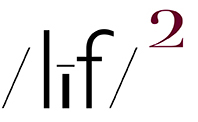APOLOGIES FOR NOT POSTING RECENTLY. ALTHOUGH I HAVE PLENTY OF photos to publish I really have not had much on my mind, photography wise, to say. There’s that, but also it should not go without mentioning that I was pretty wrapped up processing photos––110 to be exact–– from my recent travels. That written, I’m back in the saddle and ready to go.
During my recent travels to New Mexico I serendipitously encountered a few items of interest, 2 of which are photo related, 1 of which is, well, kinda weirdly mysterious(?) / mystical(?) / or, maybe just oddly coincidental….
ITEM #1 …. while visiting Bandelier National Monument, I purchased a Smokey Bear building kit––sorta like a LEGO kit but with a zillion excruciatingly tiny pieces––cuz I like to construct LEGO kits, not cuz I am enamored of Smokey Bear, per se (albeit that he is the “mascot” of the National Park Service). Being a instant gratification kinda guy, I built Smokey a day later while in our hotel in Santa Fe.
It was not until a day ago that I learned the actual Smoky Bear (a cub)––severely burned––was rescued from a forest fire in New Mexico. He was then taken to Santa Fe were he was nursed back to health and then transferred to the Smithsonian in Washington, DC where he was given a permanent home in the National Zoological Park with the stipulation that his life be dedicated to fire prevention and wildlife conservation.
That written (and call me weird if you like), but I do find it kinda weird that I rescued a disembodied (fragmented?) Smokey Bear effigy languishing in a New Mexico National Park gift shop and took it (him) to Santa Fe where I restored it (him) to life-unlike Humpty Dumpty, I made Smoky whole again. He was transported to Au Sable Forks, NY where I gave him a permanent home. I ask you, cosmic or what?
ITEM #2 (not an actual thing) …. A part of the desire to return to Santa Fe was that during our previous visit, we were not able to visit the Georgia O’Keeffe museum cuz it is by reservation only and is often booked full well in advance. So informed, we were able to book a reservation well in advance. Hence, I learned a few interesting facts about O’Keeffe….
O’Keeffe was “discovered” by Alfred Stieglitz. At first she was his lover but then his wife. It should come as no surprise that, being married to Stieglitz, she often found herself in the company of––even occasionally traveling with––notable photographers- Adams, Porter, Strand, Webb and others. Stieglitz created 350 photographs––formal studies––of O’Keeffe. Starting in 1940, after Stieglitz’ death, O’Keeffe began in earnest to pursue making photographs––with a Leica and a Polaroid––of the Southwest. She has had several exhibitions of her photos, including Georgia O’Keeffe, Photographer at the Museum of Fine Arts (Houston).
In the triptych above is one of O’Keeffe’s photos of her favorite door, a photo of her and Stieglitz at the Stieglitz family property in Lake George, NY (about 40 as-the-crow-flies miles from my house) where they spent many summers and where Stieglitz made most of his Equivalents photographs, and a photo of O’Keeffe out and about photographing with her Leica––which was on display in the glass case by the mural.
ITEM #3 …. In the O’Keeffe Museum gift shop I purchased a book, Stand in the Light ~ NATIVE VOICES illuminated by EDWARD S. CURTIS. While I was casually aware of the work of ECS, I was woefully ignorant of both the volume of the work and the dedication extended to create it.
Between 1900 and 1927 Curtis visited 80 different tribes, made 40,000 photographs, recorded songs and stories, interviewed famous tribal leaders and managed to produce and publish 29 volumes of The North American Indian. He did all this while exhausting his personal funds, losing his studio, his wife divorcing him, and being forced into bankruptcy.
Don’t know if that was extreme dedication to an endeavor or a form of obsessive insanity but, as it states on the book’s back cover:
……In a perfect partnership, the songs, prayers, and philosophies of eight American Indian tribes are paired with select historical photos––taken by the incomparable Edward S. Curtis––of the people who lived them. This carefully curated collection is an inspirational and educational journey of respect for their culture, ideals and images.
The portraits in this book are simply stunning in their straightforward honesty and gaze. iMo, Curtis is not only at the top of his game but also at the top of the game. If there is a better portrait photographer in the entire history of the medium, I am stumped as to who that might be.
Highly recommended.

